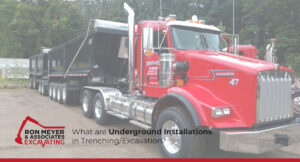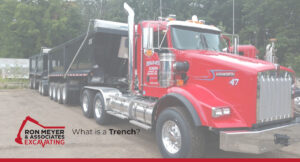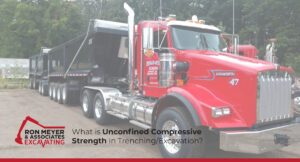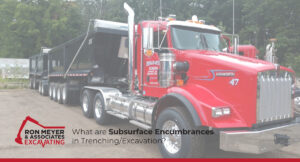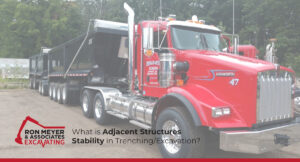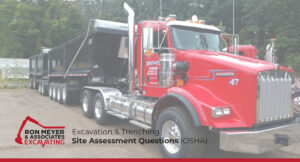Per OSHA, Underground Installations include, but are not limited to: Utilities (sewer, telephone, fuel, electric, water, and other product lines) Tunnels Shafts Vaults Foundations Other underground fixtures or equipment that may be encountered during excavation or trenching work. For additional information, see OSHA Technical Manual (OTM) Section V: Chapter 2 (Definitions). At Ron Meyer & Associate […]
What is a Trench?
Per OSHA, A Trench is a narrow excavation (in relation to its length) made below the surface of the ground. An Excavation is any man-made cut, cavity, trench, or depression in an earth surface that is formed by earth removal In general, the depth of a trench is greater than its width, and the width (measured at […]
What is Unconfined Compressive Strength in Trenching/Excavation?
Per OSHA, Unconfined Compressive Strength is the load per unit area at which soil will fail in compression. This measure can be determined by laboratory testing, or it can be estimated in the field using a pocket penetrometer, by thumb penetration tests, or by other methods. For additional information, see OSHA Technical Manual (OTM) Section V: […]
What are Subsurface Encumbrances in Trenching/Excavation?
Per OSHA, Subsurface Encumbrances include underground utilities, foundations, streams, water tables, transformer vaults, and geological anomalies. For additional information, see OSHA Technical Manual (OTM) Section V: Chapter 2 (Definitions). At Ron Meyer & Associate Excavating, Inc, we’ve been providing underground and commercial construction to private and commercial businesses for 39 years. As the general contractor or […]
What is Adjacent Structures Stability in Trenching/Excavation?
Per OSHA, Adjacent Structures Stability refers to the stability of the foundation(s) of adjacent structures whose location may create surcharges, changes in soil conditions, or other disruptions that have the potential to extend into the failure zone of the excavation or trench. For additional information, see OSHA Technical Manual (OTM) Section V: Chapter 2 (Definitions). At […]
Excavation & Trenching Site Assessment Questions (OSHA)
Per OSHA, During first and subsequent visits to a construction or facility maintenance location, the compliance officer (or the site’s safety officer or other competent person) may find the following questions useful. Is the cut, cavity, or depression a trench or an excavation? Is the cut, cavity, or depression more than 4 ft (1.2 m) in depth? Is there water in […]
- « Previous Page
- 1
- …
- 3
- 4
- 5
- 6
- 7
- …
- 20
- Next Page »
